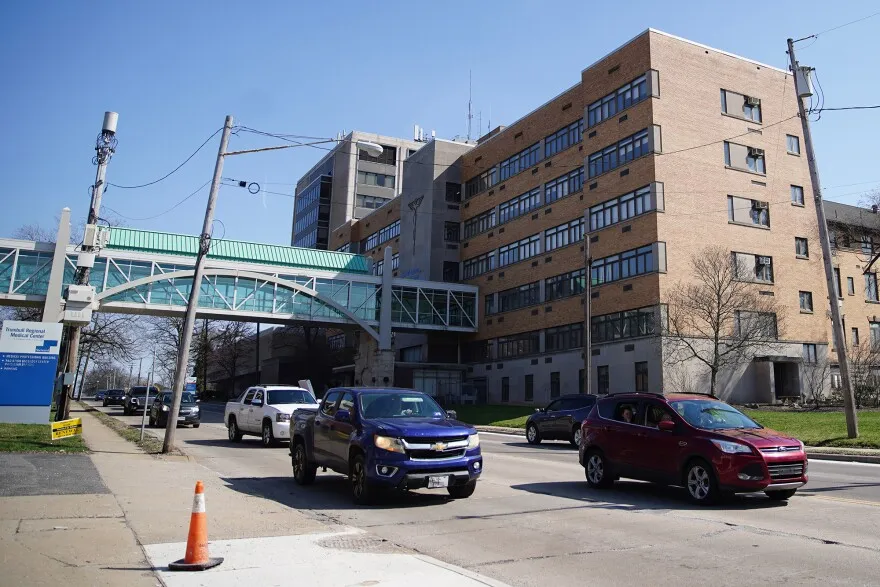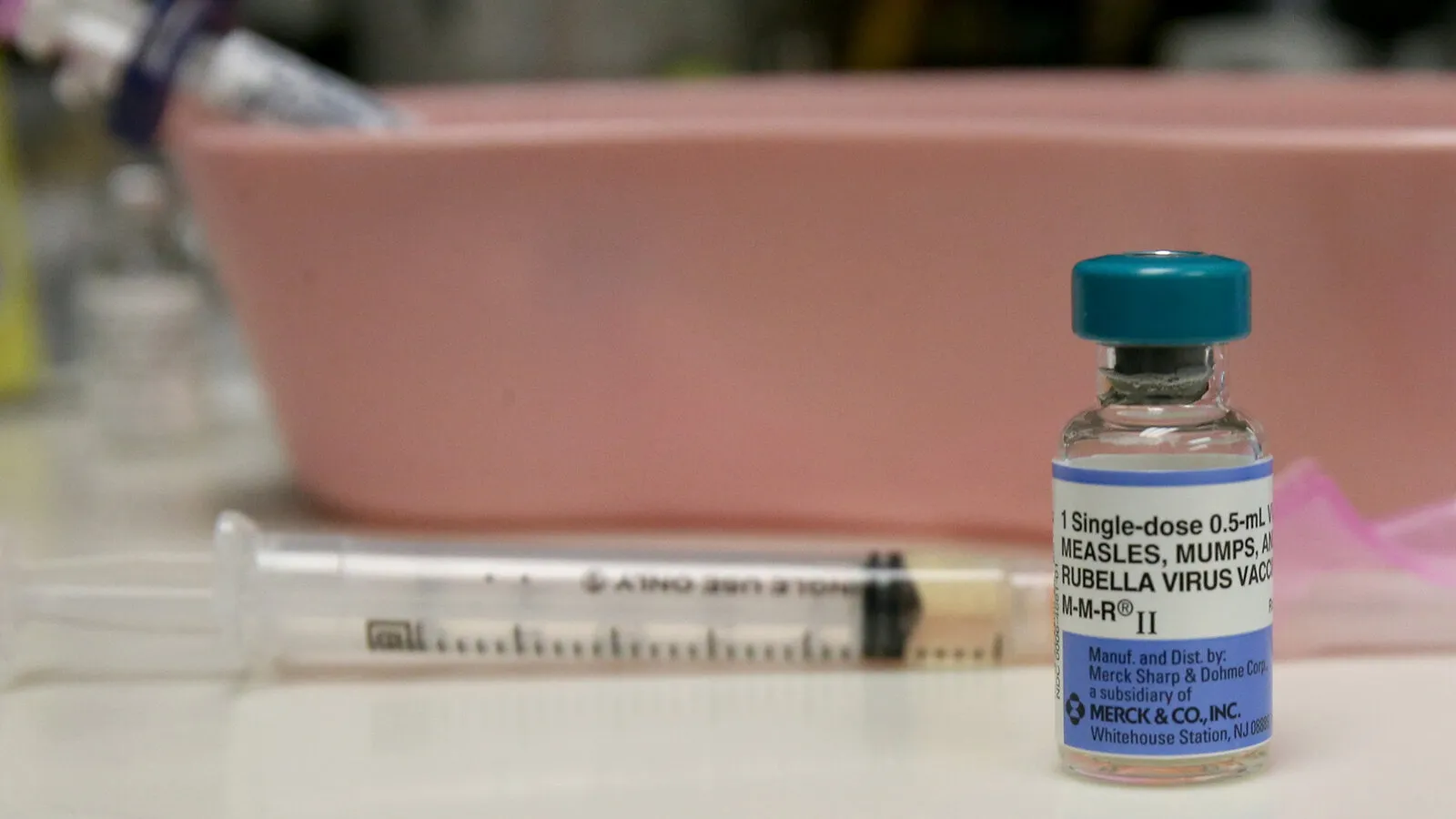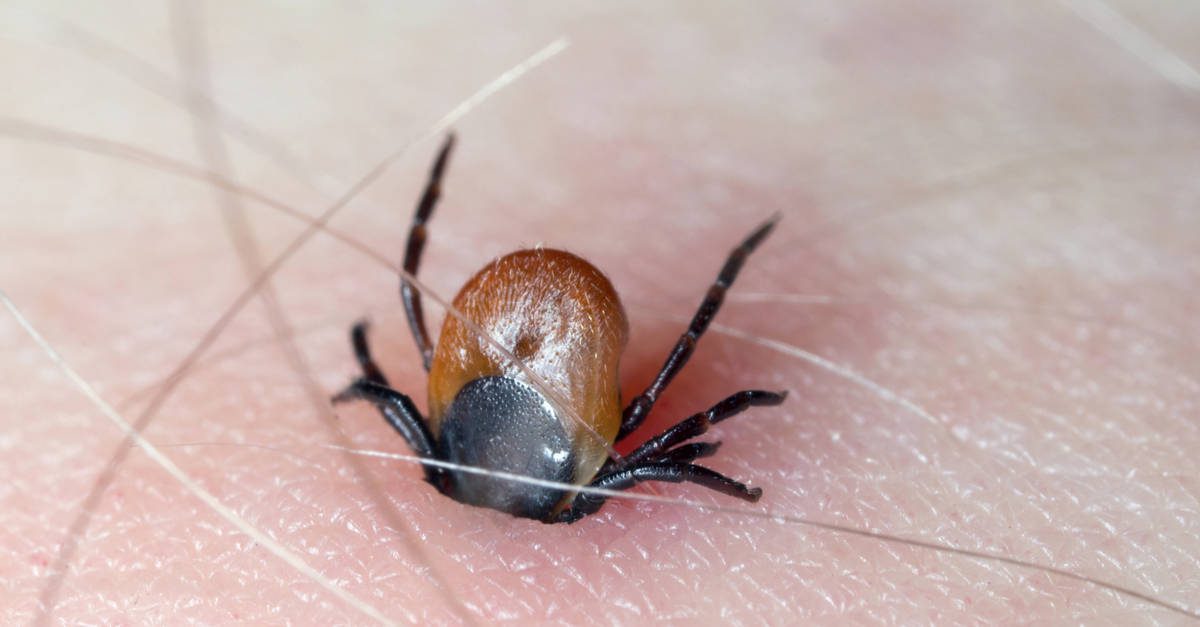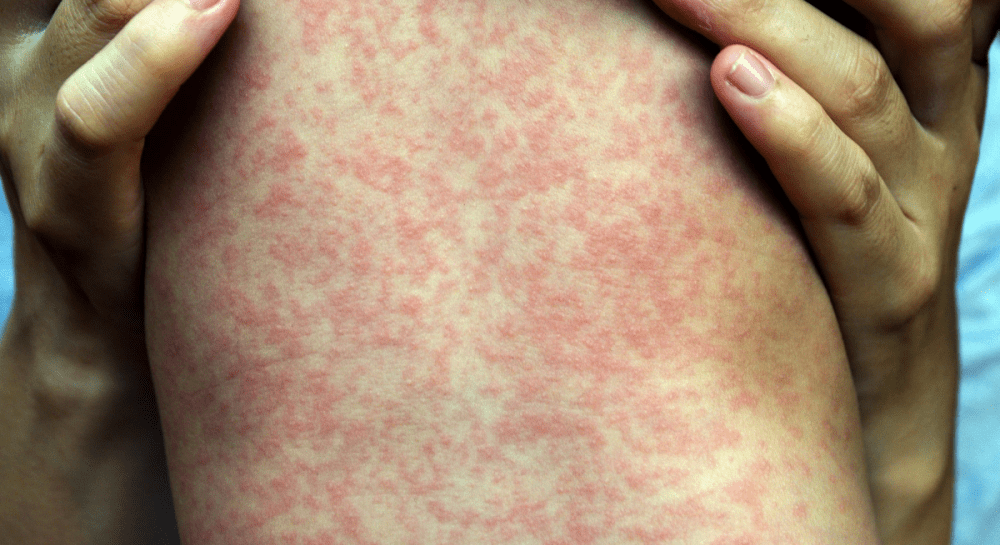Health

Health
23
Salmonella outbreak in Illinois: Bedner Growers cucumbers under attack again
CHICAGO — While Americans prepare for summer picnics and salads, a new Salmonella outbreak linked to cucumbers is overshadowing grocery shelves. The U.S. Food and Drug Administration (FDA) announced a recall of cucumbers grown by Bedner Growers in Florida and distributed by Fresh Start Produce Sales after they were associated with illnesses in 26 people across 15 states, including Illinois. This outbreak, reproducing last year's crisis when the same producer's cucumbers caused 551 cases, raises consumer concern and questions about the food safety system. In states where farmers' markets and grocery stores are community centers, Illinois residents are forced to review their vegetable supplies, and restaurants are checking their suppliers.
Cucumbers under suspicion: What is known?
The cucumbers subject to recall were grown by Bedner Growers in Boynton Beach, Florida, and sold through Fresh Start Produce Sales from April 29 to May 19, 2025. They were distributed to retail chains, distributors, wholesalers, and food service establishments nationwide, including Bedner’s Farm Fresh Market stores in Boynton Beach, Delray Beach, and West Palm Beach. According to the FDA, these cucumbers could have been sold loose or in small packages, often without labels indicating brand or expiration date. For businesses, they were labeled as "super," "select," or "ordinary," complicating traceability.
The Salmonella Montevideo outbreak, which affected 26 individuals—including nine hospitalizations—was identified following an FDA inspection in April 2025. Samples from Bedner Growers showed the presence of bacteria identical to those found in ill persons. Illinois, along with Florida, Ohio, and North Carolina, is among the states with the highest number of cases, reporting three to four infections. According to the Centers for Disease Control and Prevention (CDC), the sick, including several who consumed cucumbers on cruise ships from Florida, began experiencing symptoms from April 2 to 28.
Repeating history: Why is Bedner again at the center of scandal?
This is not the first outbreak linked to Bedner Growers. In 2024, their cucumbers, along with products from Thomas Produce Company, caused a widespread Salmonella Africana and Salmonella Braenderup outbreak that affected 551 people across 34 states, including 60 cases in Florida and several in Illinois. At that time, the FDA found bacteria in untreated canal water used for irrigation as well as in the farm soil. The current investigation, triggered by the previous crisis, confirmed a troubling trend: samples from Bedner again contained salmonella, this time the Montevideo strain, matching clinical isolates from ill individuals.
Industry insiders in food safety note that Bedner’s problems might be a symptom of a broader crisis. “Using untreated water for irrigation is a known problem in Florida, where agriculture depends on canals prone to contamination,” says a source close to the FDA investigation. The lack of strict water standards and inadequate oversight of mid-sized farms like Bedner create gaps in the system, through which bacteria can reach consumers.
Danger on the plate: What risks do consumers face?
Salmonella is not just an inconvenience. It causes diarrhea, fever, vomiting, dehydration, and abdominal cramps that can appear six hours to six days after consuming contaminated food. Though most recover within four to seven days, children under five, the elderly, and immunocompromised individuals face the risk of severe illness. In this outbreak, the hospitalization rate is 35%, nearly double the average for salmonellosis, raising concerns among experts. “This strain causes more serious outcomes than usual,” notes Eric Hagerman, a food safety attorney.
The FDA and CDC urge consumers to discard cucumbers if their origin is unknown. “If you cannot confirm your cucumber is not from Bedner Growers, it’s better not to take risks,” warn FDA officials. Restaurants and retail chains are instructed to inform customers about the risk and disinfect surfaces that contact cucumbers. Special attention is paid to cruise ships, where several ill individuals had consumed contaminated produce. In Chicago, where farmers' markets and restaurants rely heavily on fresh vegetables, owners are hurriedly checking their suppliers, fearing reputational damage.
Illinois at risk
For Illinois residents, where several cases have been reported, the outbreak is especially concerning. The state, known for its love of local products, depends on distributors sourcing vegetables nationwide. “We see cucumbers from Florida reaching Chicago shelves within days,” says Laura Wilson, a grocery co-op manager in Evanston. “But without clear labeling, it’s hard to tell where they come from.” Local health departments are advising restaurants, from trendy downtown establishments to suburban snack bars, to review their inventories and inform customers of potential risks.
Residents like Anita Ramirez of Schaumburg are already checking their refrigerators. “I bought cucumbers at the supermarket last week, but there’s no label,” she says. “Now I’ll just throw them out — better safe than sorry.” Such sentiments reflect a growing concern: confidence in food safety is declining, especially after repeated outbreaks from the same producer.
Path to resolution: Are recalls enough?
The recall announced by Bedner Growers on May 19 covers cucumbers sold at their markets before May 14, as well as products distributed through Fresh Start. The company assures that the current cucumbers on the market are safe since Bedner’s growing season has ended. Meanwhile, Fresh Start is actively contacting customers to facilitate product withdrawal. However, the lack of clear information on where exactly the cucumbers have been distributed complicates efforts. “The FDA still does not know the full supply chain,” says an agency source. “It’s like looking for a needle in a haystack.”
Experts are calling for systemic changes. “The problem is not just Bedner, but how we grow and distribute food,” says Dr. Sarah Cook, an epidemiologist at the University of Chicago. She advocates for increased water testing on farms and mandatory labeling for fresh produce. Until such reforms are implemented, consumers remain vulnerable.
What’s next for Illinois and America?
As the FDA and CDC untangle supply chains, residents of Illinois and other states are forced to exercise caution. The FDA recommends checking the origin of cucumbers in restaurants over the coming week and consulting healthcare providers at the slightest symptoms of salmonellosis—from fever to dehydration. For businesses, especially in Chicago where the gastronomic scene is an economic driver, the outbreak could lead to a temporary decline in confidence in fresh vegetables.
This crisis is not just about cucumbers but about the fragility of systems meant to protect Americans from plate to table. The second outbreak by Bedner Growers in two years challenges regulators, farmers, and distributors: can they learn from their mistakes? For Illinois families preparing dinners or packing lunches, the answer is not just policy but health and trust. In a world where food should be a source of joy, not fear, the fight for safe products remains as urgent as ever.
21.05.2025

Health
28
Crisis in Warren: Tambula and Hillside Hospitals Closed, the City Without Medical Aid
WARREN, Ohio — In a city where steel mills once roared, and now the fight for survival defines its spirit, a new tragedy has struck at the heart of the community. The Mahoning Valley Regional Medical Center in Trumbull and Hilltop Rehabilitation Hospital, two pillars of the valley's healthcare infrastructure, have ceased operations, leaving Warren without a hospital, hundreds of workers unemployed, and thousands of patients without care. This unfolding drama, set against the backdrop of the bankruptcy of the previous owner, Steward Health Care, and financial difficulties faced by the new operator, Insight Health System, raises pressing questions about corporate greed, governmental responsibility, and the fate of rural communities in modern America.The pause that paralyzed the cityOn March 27, 2025, at 3:00 PM, the doors of the Mahoning Valley Regional Medical Center and Hilltop Rehabilitation Hospital closed to all — from emergency services to outpatient care. A notice posted by Insight Health System on their website blamed 'unexpected events' related to Steward Health Care's bankruptcy and an 'increasing shortage of transferred dollars' for services provided. Patients were redirected to other facilities, and upcoming appointments canceled 'in the interest of safety.' Signs about closures appeared on Hilltop's doors, and staff, many of whom had dedicated decades to these facilities, received orders to stay home."We’re just trying to hold on to hope," says Tom Connelly, a registered nurse and president of the Trumbull Medical Center union, whose voice trembles with a mix of anger and fatigue. According to him, between 700 and 800 workers, including non-union staff, lost their jobs in March. "These are not just numbers —" he adds, "they are people who saved lives, who raised families here." Connelly recounts that the last two-week paycheck was paid out, but holiday bonuses due on Friday never arrived. "I’m not sure if Insight even has the money. We don’t even know if we’ll see those funds."From hope to despairSix months ago, it seemed that disaster could be avoided. In May 2024, Steward Health Care, which owned the hospitals, filed for bankruptcy, threatening to close both facilities and lay off nearly 1,000 workers. But in September, Insight Health System, a non-profit organization from Michigan, took over management, promising to restore stability. Warren residents sighed with relief, and nurses, doctors, and technicians returned to work, hopeful for better days.This hope dissolved in March 2025, when Insight announced a "pause" in operations due to financial problems caused by Steward’s actions. According to Insight, Steward, in the process of bankruptcy in Houston court, is withholding Medicaid and Medicare funds needed to operate the hospitals. "Steward issues bills but doesn’t pay us," explains a source close to Insight, adding that the company has invested over $30 million of its own funds but cannot continue without access to those funds.The community without a hospitalThe closure of Trumbull and Hilltop has left Warren, a city of about 40,000, without its own hospital — a situation Mayor Dags Franklin calls "unprecedented." The nearest facility, Mercy Health St. Joseph Hospital, is overwhelmed: emergency rooms are full, surgical schedules are overcrowded, and nurses are critically short. "They are performing miracles, but the system is cracking at the seams," says Connelly, who dreams of returning to work to ease his colleagues’ burdens.For the Mahoning Valley, a region already suffering from economic decline following the collapse of the steel industry, the loss of hospitals is not just medical but a social catastrophe. Hilltop was the only provider of behavioral health services in Trumbull County, serving thousands of vulnerable residents. "Without these facilities, people are left without care," notes Connelly. "We cannot allow rural communities to pay the price for corporate games."A call for justiceThe community’s outrage has resonated in political circles. This week, three Ohio congressmen — Dave Joyce, Jon Husted, and Michael Rulli — sent a letter to US Attorney General Pem Bondi, demanding an investigation into the "legality and transparency" of Steward Health Care's actions. They accuse the company of possible misuse of government funds and lack of communication with local officials. "If fraud or theft has occurred, those responsible must answer," the lawmakers write, emphasizing that the Mahoning Valley deserves answers.David Joyce, who was able to speak with, does not hold back his emotions. "As a former prosecutor, I see this as either fraud or theft," he states. "Steward is holding onto money that should have gone toward nurses’ salaries and patient care, and Insight is left without funds." Joyce acknowledges that the closure was forced, but insists: a federal investigation should determine whether Steward’s actions were criminal. Similar letters were sent to Ohio Attorney General Dave Yost, but, according to Joyce, "there was no response, perhaps due to jurisdiction."Mayor Franklin called earlier for Yost to investigate possible Medicaid fraud, but progress, if any, remains unseen. "It’s not just about the money," Franklin says. "It’s about people’s lives, about our city."A look into the unknownFor Tom Connelly and his colleagues, hope flickers but dims with each passing day. A meeting with Insight representatives on Thursday offered a glimmer of optimism: there is a chance that the Trumbull emergency department may reopen within a month. But skepticism is growing. "Who would return to work after this?" Connelly asks. "We are losing trust, and that’s the worst." The nurses’ union, according to regional director Debi Bindas, received neither official notices of layoffs nor guarantees of payments.The investigation demanded by the congressmen could shed light on Steward’s actions, but for Warren, it will not bring back the hospital tomorrow. "It’s good that they’re seeking the truth," says Connelly, "but we need beds for patients, not papers in court." His words reflect the despair of a community feeling abandoned in a maze of corporate and legal games.Warren, a city that has endured industrial decline and an opioid epidemic, faces a new challenge. The closure of Trumbull and Hilltop is not only a local tragedy but a mirror of systemic problems in American healthcare: profits over people, bureaucracy over compassion. While politicians write letters and courts handle bankruptcies, nurses, doctors, and patients in Warren wait for a miracle — or at least an answer — when their city will once again have a hospital.
21.05.2025

Health
25
Confirmed measles case in Cleveland: Cuyahoga County residents advised to self-isolate after potential contact
Case of measles confirmed in Cleveland: residents of Cuyahoga County advised to self-isolate after possible contactCleveland, Ohio — As the United States faces a resurgence of measles cases — a disease previously considered nearly eradicated — a local case has been detected in Cuyahoga County, prompting the Health Department to issue an official public warning.An unvaccinated child diagnosed with measles received medical care at Hillcrest hospital on May 2 and returned to the emergency department on May 4. According to Cuyahoga County Board of Health (CCBH), the child was examined and sent home in quarantine “for the duration of the illness.”Health professionals expressed concern about potential spread of the virus among individuals present in the hospital's Atrium lobby during that period. Specifically, this concerns the time window from 15:50 to 18:15 on May 2. Everyone who was in the risk zone and does not have confirmed immunity is advised to adhere to a 21-day quarantine and avoid public places.“This is not about panic. It’s about responsibility. If you are unvaccinated — stay home,” — emphasized the department.Who should stay at home?According to CCBH, individuals are considered immune to measles if:they have received two doses of the MMR vaccine (measles, mumps, rubella) after 12 months of age,they have a positive blood test for measles antibodies,they were born before December 31, 1956 (generally assumed to have had measles in childhood).Individuals who do not meet any of the above criteria may be potentially susceptible to infection.For vaccination or quarantine consultations, CCBH recommends calling 216-201-2000 or visiting their website.Cases are rising nationwideThis case is just a drop in a worrying trend. According to CDC, the U.S. has already surpassed 1,000 laboratory-confirmed measles cases this year, the highest since the early 1990s. The largest outbreak was recorded in West Texas, but cases have been reported in nearly all states.Despite years of vaccination efforts, experts warn that a decline in MMR vaccine coverage — partly due to misinformation — creates ideal conditions for the disease to make a comeback.“Measles is not an innocent childhood disease. It is a highly contagious and potentially deadly infection,” — remind the CDC.CCBH and local doctors encourage residents to stay calm — but also to take decisive action: check their vaccinations, isolate if necessary, and consult a doctor if in doubt.Information is our first line of defense, vaccination is our best protection.
14.05.2025

Health
322
Men’s health: three simple truths that change lives
Until recently, health for many men was associated with two things: not being sick — therefore, everything is fine, and "going to the doctor — only in extreme cases." But the world is changing, as is the perception of true strength. Today, being a man means not only being resilient but also being responsible — for yourself and your loved ones. That is why three simple yet profound messages can serve as a starting point for a healthy and long life.
A recent forum in Southern Jersey dedicated to men's health gathered over 70 participants and confirmed: yes, men care about their bodies and minds, and yes — it’s not too late to change everything even after 50. Discussions, speeches by doctors and a personal trainer showed that modern health views are not a marathon of youth but an open path for everyone. And the three messages most frequently resonated — simple as bread, but solid as bone.
Prevention is not weakness, but wisdom
The habit of postponing visits to the doctor or avoiding them altogether is a sad standard prevalent among men worldwide. In the USA, the UK, and yes, even in Ukraine — men are afraid, ashamed, or simply don't have time. But in reality, preventive check-ups are not about illnesses but about life.
Doctors emphasize: asymptomatic diseases are the most insidious. High blood pressure, diabetes, heart problems can remain hidden for a long time until it's too late. When you visit a doctor once a year, you’re not just “checking analyses,” you’re building the future — for yourself and those around you.
You are not alone. Live healthily for those who love you
This rule sounds simple but has a deep emotional resonance. Men often see themselves as pillars for others but forget that their presence also matters. Wife, children, grandchildren, friends — they want to see you healthy, active, happy.
Emotional connections are not only a source of inspiration. Research shows: people with strong social ties smoke less, eat better, exercise more often, and live longer. Your health is not only your life but also a part of your loved ones' lives.
It’s never too late to change everything
There is no age at which it’s too late to start caring for yourself. Even if you're 60, 70, or older — research clearly states: lifestyle changes benefit at any age. Healthy eating, exercise, giving up harmful habits — it’s not necessarily about youth; it’s about choice.
A study by Johns Hopkins University showed that physical activity can not only improve form but also literally rejuvenate the heart. The brain? A 100-year-old’s brain isn’t much different from that of an 18-year-old. Another proof: you are your own main resource.
Conclusion: don’t heroically act — act wisely
Being healthy is not heroism. It’s habits, care, and courage to face the truth. Three simple actions: go to the doctor, think of loved ones, and start today — these are not brochure tips but keys to a long, active, and happy life.
So, guys — lift your head, open your calendar, and plan your first step. Because true masculinity lies in responsibility.
15.04.2025

Health
238
Health test in 30 seconds: what does your ability to get up from a chair reveal?
At first glance — this seems trivial: getting up from a seated position. But this simple action can become a window into your overall physical condition. Medical professionals call it the "Sit-To-Stand test" (English: Sit-To-Stand or STS), and it surprisingly reveals a lot about your muscles, balance, endurance, and even heart risk.
What is this test?
STS is a self-assessment method that can be easily performed at home. All you need is a straight-backed chair (without armrests), a timer, and some space. Sit in the middle of the chair, cross your arms on your chest, place your feet flat on the floor — and count how many times you can fully stand up and sit down again in 30 seconds.
This test is widely used in geriatrics — to assess the physical condition of elderly people. However, it can also be a valuable marker of overall physical health and the functional capacity of the body for younger individuals.
What do your results mean?
Organizations such as the CDC (Centers for Disease Control and Prevention, USA) have established average benchmarks for each age group. For example, a person aged 60–64 typically performs 12–14 stands. In older categories, these numbers decrease. If your result is significantly below the norm — it’s a signal that you should consult a doctor.
For young people, it serves as a kind of fitness indicator. For instance, a study in Switzerland showed that at ages 20–24, the average result is about 50 stands per minute. But there were also exceptional participants who managed to stand up 72 times!
Why is this important?
A low score may indicate deteriorating heart and vascular function, muscle weakness, or fall risk. For the elderly, the last is especially dangerous: one-third of people over 65 fall each year. The consequences can be serious — from fractures to loss of mobility and social isolation.
Studies have even shown that people with worse results in the STS test have a significantly higher risk of mortality in subsequent years. But don’t be alarmed — it’s just a marker, not a verdict.
How to improve your result?
The most effective way is to stay active. Even light physical activities, such as household chores, walking, or taking stairs instead of the elevator, can have a significant impact. For those with limited mobility, it’s recommended to start with simple seated exercises, gradually progressing to full standing.
Playing with grandchildren, gardening, short walks — all of these not only improve scores but also positively influence emotional well-being and social activity. According to experts, loneliness is no less a health hazard than lack of physical activity.
Simple test — great significance
The STS test is not just exercise. It is a way to look at yourself, an opportunity to assess where you are now — and which direction to move to preserve or regain control over your own body. It doesn't require expensive equipment or medical expertise, but provides a clear idea of your physical shape and potential risks.
If you think, “Now is not the time” — perhaps that’s exactly the best moment to check your health. And remember: it’s never too late to change habits.
11.04.2025

Health
608
Revolutionary Back Pain Treatment: Cleveland Surgeon Uses New Technology
Back pain – a problem affecting millions of people around the world. In some cases, surgery becomes the only way to return to a normal life.
In Cleveland, neurosurgeon Xiaofei Zhou is implementing the latest minimally invasive endoscopic surgical technique for treating intervertebral disc hernias. This procedure is minimally invasive, allowing patients to recover faster and return to active life.
How does the new method work?
Traditionally, spinal surgeries require bones to be drilled and muscles to be cut, leading to a long and painful recovery. The new Arthrex procedure, used by Doctor Zhou, allows for the removal of a herniated disc through a tiny incision.
"We access the nerves through a very small camera port. This allows us to operate through a cut the size of a fingernail, without damaging bones or muscles," – explains Zhou.
This approach significantly shortens the recovery period, and patients can walk the same day after surgery.
Theresa Tuma's story: quick recovery
29-year-old Theresa Tuma from Lakewood suffered from severe pain due to an intervertebral disc hernia for a long time. The woman tried steroid therapy and physiotherapy, but relief did not come.
"It was destroying my life," – she recounts.
In February 2025, Zhou performed an endoscopic operation on her, after which the patient was able to stand and walk on the same day as the surgery.
"I didn’t feel any pain, even though I wore the brace for almost a year. I thought there would be stiffness or discomfort, but nothing like that happened," – shares Tuma.
Is this surgery suitable for everyone?
Doctor Zhou emphasizes that this method is not suitable for all patients.
"We cannot promise a perfect operation – there are always risks. Therefore, if there is an opportunity to avoid surgical intervention, we choose that," – explains the doctor.
However, for those who meet the criteria, this procedure represents a real breakthrough in back pain treatment, allowing patients to return to normal life much quicker than after traditional surgery.
04.04.2025

Health
392
Walmart and Target are withdrawing batches of Tony's chocolate: what is the reason?
Popular chocolate brand Tony's Chocolonely voluntarily recalls seven batches of its chocolate bars due to possible inclusion of small stones. These bars are sold in major retail chains, including Walmart, Target, and Jewel-Osco, and have been distributed throughout the United States.
Reason for the recall
The company received 12 reports from consumers who found foreign objects in the chocolate. The issue arose due to , supplied by an external manufacturer. Cases have been reported outside the US and Canada, and no injuries have been reported so far.
“Although the likelihood that any individual product may contain foreign objects is low, we decided to take this step to ensure consumer safety,” – the company's statement reads.
Which chocolate bars are being recalled?
Products subject to recall:
Product DescriptionWeightBatch CodeExpiration DateUPCTony's Chocolonely Everything Bar180 g / 6.35 oz4327November 22, 20258500118285644330November 25, 20258500118285644331November 26, 2025850011828564M4331November 26, 2025850032676441Tony's Chocolonely Dark Chocolate Almond with Sea Salt180 g / 6.35 oz163094April 2, 2026858010005641162634February 28, 2026858010005641M162634February 28, 2026850011828908
The company noted that other chocolate bars of the brand are not affected by the recall.
What should you do if you purchased these bars?
If you bought chocolate from the recalled batch, do not consume it. The company recommends returning the product to the store where it was purchased for full refund or replacement. Alternatively, you may dispose of the bar.
Detailed information about the recall and refunds can be found on the official Tony's Chocolonely website.
03.04.2025

Health
409
How to Avoid Tick-Borne Diseases: Expert Tips
Summer is a time for outdoor relaxation, picnics, and travel, but along with sunny weather, the risk of encountering ticks also increases. Warming temperatures and an extended warm season contribute to the activity of these small but potentially dangerous parasites. In many regions, specialists forecast a particularly challenging season due to the early arrival of warm weather.
Why is this important? Ticks can carry serious diseases, including Lyme disease, babesiosis, and ehrlichiosis. To avoid bites and know how to act if a tick bites you, it’s advisable to follow simple but effective rules.
How can you protect yourself from ticks?
Preventing a tick bite is much easier than treating possible consequences. Here are the main safety measures:
🔹 Proper clothing:
Wear light-colored clothing to more easily spot ticks.
Wear long pants and long-sleeved shirts.
Tuck your pants into socks – this makes it harder for ticks to reach your skin.
🔹 Using repellents:
Products with DEET (20-30%) effectively repel ticks.
Use on clothing – it acts as an insecticide.
🔹 Inspection after being outdoors:
After returning home, thoroughly check your skin, especially areas under armpits, behind ears, under knees, in the groin, and on the scalp.
Also examine your clothing and things – ticks can move around.
Take a shower – this helps wash off ticks that have not yet attached.
What to do if you find a tick on yourself?
If a tick has already embedded in your skin, it’s important to remove it correctly:
✅ Use a fine-tipped tweezers.✅ Grab the tick as close to the skin as possible.✅ Carefully, without sudden movements, pull upward – do not twist or crush it.✅ Treat the bite site with an antiseptic.✅ If part of the tick remains in the skin, try to remove it with sterile tools or see a doctor.✅ Wash your hands with soap.
What not to do?❌ Do not apply oil, Vaseline, or alcohol to the tick – it may release infected fluids into your blood.❌ Do not burn the tick with a match.❌ Do not squeeze it with your hands.
How to know if a tick has bitten you?
The bite itself is usually painless, so many people notice the parasite only after it has attached. Main signs of a bite:🔸 Red spot or swelling.🔸 A characteristic rash in the shape of a "bull’s eye" may indicate Lyme disease.🔸 Feeling of itching, pain, or burning.
If the tick has embedded and remained on the body for several days, the risk of infection increases.
What to do if a tick bites you?
After removing the tick, carefully monitor your well-being. If within a few days or weeks you develop any of the following symptoms, see a doctor:
⚠ Fever or chills⚠ Headache or muscle pain⚠ Weakness and fatigue⚠ Rash, especially in a ring shape⚠ Joint pain
Important! Some diseases, including Lyme disease, may not show symptoms immediately. If an infection is suspected, the doctor may prescribe tests or a preventive course of antibiotics (doxycycline).
Where are tick-borne diseases most common in the USA?
Ticks are widespread across the entire USA, but some regions are hotspots for infections:
📍 Lyme disease – Northeast, Midwest, Atlantic coast📍 Ehrlichiosis – Southeast, Texas📍 Babesiosis – Northeast, Great Midwest📍 Rocky Mountain spotted fever – Western USA
You can see the map of tick-borne disease distribution on the CDC (Centers for Disease Control and Prevention) website.
Conclusion
To avoid tick-borne diseases:✅ Wear appropriate clothing.✅ Use repellents.✅ Check yourself after outdoor activities.✅ Properly remove a tick if bitten.✅ Monitor your health.
Ticks are not a sentence, but neglecting safety measures can lead to serious consequences. Take care of yourself and enjoy summer without troubles! 🌿☀
01.04.2025

Health
446
Measles Alert in Philadelphia: Which locations might have been affected by the virus?
Is there a threat to the population?
On Wednesday, representatives of the Philadelphia Department of Health reported a possible contact with measles patients at two locations in the city. At the same time, specialists assure that there is no threat to the general public.
The case of illness is related to international travel and has no connection to recent measles cases detected in Montgomery County or in Texas.
"This case of measles does not pose a threat to the population," — emphasized the Health Commissioner Dr. Palak Raval-Nelson.
Where and when could the contact have occurred?
According to officials, the infected person was present at the following places:
📍 South Philadelphia Health and Literacy Center
📅 Friday, March 7, 2025, 10:45 AM – 2:40 PM
📅 Saturday, March 8, 2025, 9:05 AM – 1:20 PM
📍 Address: 1700 South Broad Street, Philadelphia, PA 19145
This building includes:
CHOP Pediatric Primary Care in South Philadelphia
Department of Health Center No. 2
South Philadelphia Library (no contact in the library)
📍 CHOP Emergency Department
📅 Monday, March 10, 2025, 7:55 AM – 10:15 AM
📍 Address: 3401 Civic Center Boulevard, Philadelphia, PA 19104
What is measles and why is it dangerous?
Measles is an extremely contagious viral disease that is transmitted:
By airborne droplets through coughing or sneezing
Through direct contact with infected droplets
Primary symptoms of measles:
High fever
Runny nose and cough
Eye inflammation
Characteristic red rash
The illness remains contagious for four days before and after the rash appears. Infants, immunocompromised individuals, and those who are unvaccinated are particularly vulnerable. In severe cases, measles can cause pneumonia, brain infections, and even death.
How to know if you are protected?
If you have received two doses of the MMR vaccine (measles, mumps, rubella) – you are protected.
The vaccine is 97% effective and provides lifetime immunity.
People born before 1957 generally have natural immunity.
If you have previously had measles, re-infection is unlikely.
"If you are protected, you do not need to do anything," — officials from the health department stated.
What should you do if you are not vaccinated?
If you have not received the vaccine, contact a doctor to get the MMR vaccination.
If you have been in contact with infected individuals, monitor for symptoms.
If infected, stay at home for 21 days to prevent the spread of the virus.
The Philadelphia Department of Health provides additional information about places where you can get vaccinated.
Conclusion
Despite the identified case, experts state that the risk of measles spread is low. Nevertheless, this once again underscores the importance of vaccination as the only reliable protection against this dangerous virus.
14.03.2025